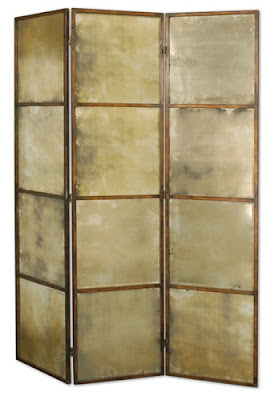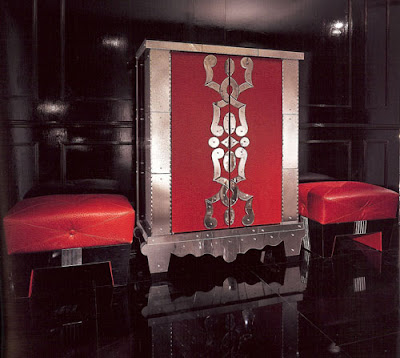Since the beginning of time, humans have collected things of interest to them. Many of these collectibles such as precious stones and metals later were used for trade. As far back as the Renaissance (14th to 17th century), there have been documented collections of items such as books, art, and Greek and Roman antiquities. In the 18th century religious iconography was heavily collected throughout Europe. In the young nation of the United States, handcrafted wares such as wooden bowls and quilts were collected and passed down generations. Today, more than ever, people collect. Everything that you can imagine can be, and probably is collected. There are unlimited sources for finding what you desire, and innumerable collectibles within every budget.
WHY HAVE A COLLECTION?
You might wonder why have a collection? There are many reasons to have collections. As a designer, I find collections add character and interest to a space. They give a place for the eye to focus on detail. Often we scan a space with our eyes, seeking out something that piques our interest. This can be a simple button collection that has been wonderfully framed or tin toys from the early 20th century displayed on a shelf. Collections can preserve history or memories of special events. They can give you a hobby, and can lead to great adventures seeking out that ‘perfect’ find.
WHO SHOULD HAVE A COLLECTION?
Simple answer…EVERYONE! Whether you think of yourself as a collector or not, you more than likely have a collection of something. As children we start collecting: rocks, toy cars, dolls, coins, stamps, books, etc. To a child these collections can be the most important things in their lives. They form a passion for seeking out the item to complete their collection, only to find out that there is always something more to add. As adults, we too collect. These collections can be unintended such as jewelry or as intentional as a mantle adorned with antique silver candlesticks. “A Passion for Collecting: Decorating with Your Favorite Objects” (Bullfinch Press), divides collectors into nine distinct groups: the Antiquarians, Explorers, Inheritors, Perfectionist, Naturalist, Utilitarians, Enthusiast, Decorators, and Miniaturist. Most people fall into a couple, if not a few of these classifications.
WHAT SHOULD I COLLECT?
Simple answer again…ANYTHING! Many times we start a collecting without ever thinking that it will be a collection. Often while on a vacation one picks up some kind of a souvenir and on the next vacation finds themselves getting something similar. One might go to the ocean and collect seashells or to a flea market in Paris seeking out vintage picture frames. Whatever one chooses to collect, do it with passion. Find something that you truly have interest in, and it will become your passion. When collecting, there are considerations to keep in mind, with the most important being budget. Having a passion for collecting that you can’t afford will only bring disappointment when you find that ‘perfect’ piece. The second most important consideration is space to house your collection. If your collection is buttons, that will take up very little space compared to 18th century crockery. Have fun with whatever you chose and don’t be afraid to collect the unexpected. Below are numerous pictures of things that my clients, others and I have collected, each different and personal.
HOW DO I DISPLAY A COLLECTION?
There are many ways to display collections, but I have one caveat: group your collection TOGETHER! This cannot be understated. Often people who collect place the items all over the house thus becoming very kitschy. By grouping collections, one can focus on the characteristic similarities and differences amongst the collection. They will also have a stronger impact in the room. Smaller items can be in a bowl or basket on a table, larger items can be displayed on dedicated shelves, unadulterated by other items. Display cases are an effective way of displaying items as long as nothing else is in the case. Often taking your small items to a framer to be shadow-box framed is the best way to give a big impact. Below are some pictures of collections displayed in different ways creating drama and impact. Find a collection that you can grow with time, allowing space for future acquisitions. If your collection grows larger than you have space to display, be willing to thin out your collection, keeping the very best and selling off or gifting to others for their own collections.

A collection of stone spheres placed on the floor to create visual interest
©Terrance Mason Interiors
A wall mounted display case houses a collection of Vitra Miniature Chairs
©Terrance Mason Interiors
Onyx, Silver and Semi-precious Stone Mayan Bust are elegantly displayed using Lucite risers
©Terrance Mason Interiors
A grouping of sparkling crystal candlesticks create drama on this dining room table
©Terrance Mason Interiors

Glass and stone hearts beautifully displayed in this large bowl
©Terrance Mason Interiors
 This shadow-box frame is perfect for displaying glass hearts
This shadow-box frame is perfect for displaying glass hearts
©Terrance Mason Interiors  Simple white shelves are used to highlight this architectural collection
Simple white shelves are used to highlight this architectural collection©Terrance Mason Interiors
 A fantastic whimsical collection of blown glass grouped together on top of a bookcase creates a a wonderful play of light and color
A fantastic whimsical collection of blown glass grouped together on top of a bookcase creates a a wonderful play of light and color
©Terrance Mason Interiors
 A wonderful collection of green glass vases displayed on a shelf with plastic boxes as risers
A wonderful collection of green glass vases displayed on a shelf with plastic boxes as risers©Terrance Mason Interiors
 This grouping of "Conway" black framed convex mirrors float with such abandon over this sofa
This grouping of "Conway" black framed convex mirrors float with such abandon over this sofa
from the Mitchel Gold +Bob Williams accessory line
 Harmoniously framed butterflies create a dramatic collection
Harmoniously framed butterflies create a dramatic collection in this Mitchell Gold + Bob Williams display
 Plate rails were used here to create a gallery of assorted black framed artwork
Plate rails were used here to create a gallery of assorted black framed artwork
©Terrance Mason Interiors
 This niche was a perfect place to hang this collection of Deruta Pottery
This niche was a perfect place to hang this collection of Deruta Pottery©Terrance Mason Interiors
WHERE TO FIND COLLECTIBLES
Collectibles can be found just about anywhere one would look. The right collectible for you might take a little time to seek out. Often I find that nicer furniture stores have already created collections in their displays ready to take home. Many of my favorite places to look are your local import stores, which can have a plethora of items to start or add to an existing collection. For those of you more adventurous, I recommend yard sales, flea markets, and internet sites such as EBay. The pictures below are just a few examples of collectibles that I saw one afternoon on a walk. However you choose to collect, do it with passion and you will have something that you, your loved ones and guest will enjoy for years to come!
 Ultra Thin Colored Glass Bottles displayed at Mitchell Gold + Bob Williams
Ultra Thin Colored Glass Bottles displayed at Mitchell Gold + Bob Williams







































































